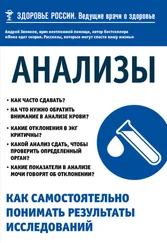27. Dutton J.E. Energize Your Workplace: How to Create and Sustain High-Quality Connections at Work – San Francisco: Jossey-Bass, 2003, p.2
28. Baker S. Putting a price on social connections // BusinessWeek , April 8, 2009
29. Cohen D., Prusak L. In Good Company: How Social Capital Makes Organizations Work – Boston: Harvard Business School Press, 2001, pp.95–97
30. Grant A.M., Dutton J.E., Rosso B.D. Giving commitment: Employee support programs and the prosocial sensemaking process // Academy of Management Journal , № 51, pp.898–918
31. Everson D. Baseball’s winning glue guys // The Wall Street Journal , July 16, 2009
32. Wagner N., Feldman G., Hussy T. The effect of ambulatory blood pressure of working under favourably and unfavourably perceived supervisors // Occupational Environmental Medicine , № 60, 2003, pp.468–474
33. Bradberry T. A bad boss can send you to an early grave // Philanthropy Journal , January 30, 2009. Источник: www.philanthropyjournal.org
34. Там же
35. Goleman D. Working with Emotional Intelligence – New York: Bantam, 1998, p.215
36. Buckingham M., Coffman C. First, Break All the Rules – New York: Simon and Schuster, 1999
37. Cohen D., Prusak L. In Good Company: How Social Capital Makes Organizations Work – Boston: Harvard Business School Press, 2001, pp.24–25
38. Pearson C.M., Anderson L.M., Porath C.L. Assessing and attacking workplace incivility // Organizational Dynamics, 2000, pp.123–137
39. Pattison K. The social capital investment strategy // Fast Company , September 8, 2008
40. Gable S.L., Reis H.T., Impett E., Asher E.R. What do you do when thinks go right? The intrapersonal and interpersonal benefits of sharing positive events // Journal of Personality and Social Psychology , № 87, 2004, pp.228–245
41. Gable S.L., Gonzaga G.C., Strachman A. Will you be there for me when things go right? Supportive responses to positive event disclosures // Journal of Personality and Social Psychology, № 91, 2006, pp.904–917
42. Cohen D., Prusak L. In Good Company: How Social Capital Makes Organizations Work – Boston: Harvard Business School Press, 2001
43. В своей книге «В хорошей компании» ( In Good Company ) Коэн и Прусак рассказывают о том, как лидеры могли бы инвестировать в «пространство и время для образования социальных связей». См. сс. 81–101
44. Dutton J.E. Energize Your Workplace: How to Create and Sustain High-Quality Connections at Work – San Francisco: Jossey-Bass, 2003, p.161
45. Dutton J.E. Fostering high-quality connections // Stanford Social Innovation Review , winter 2003
46. Cohen D., Prusak L. In Good Company: How Social Capital Makes Organizations Work – Boston: Harvard Business School Press, 2001, p.22
47. Peters T. MBWA after all these years / Dispatches from the New World of Work , September 16, 2005. Источник: www.tompeters.com/dispatches/008106.php
48. Lyubomirsky S. The How of Happiness – New York: Penguin, 2007, pp. 97–100
49. Agloe S.B., Haidt J., Gable S.L. Beyond reciprocity: Gratitude and relationships in everyday life // Emotion , № 8, 2008, pp.425–42950. Trejos N. Recession lesson: Share and swap replaces grab and buy // Washington Post , July 17, 2009
Распространяем преимущество счастья на работе, дома и просто вокруг себя
1. Christakis N.A., Fowler J. Connected – New York: Little, Brown and Company, 2009
2. Thompson C. Are your friends making you fat? // New York Times , September 10, 2009
3. Один из пионеров в области нейронауки М.Якобони не так давно выпустил книгу, в которой с блеском разъяснил сложнейшую научную основу феномена зеркальных нейронов и их роли в эмпатии: Iacoboni M. Mirroring People – New York: Picador, 2008
4. Goleman D. Social Intelligence – New York: Bantam, 2006, p.65
5. Friedman H., Riggio R. Effect of individual differences in nonverbal expressiveness on transmission of emotion // Journal of Nonverbal Behavior , № 6, 1981, pp.96–104
6. Goleman D. Social Intelligence – New York: Bantam, 2006, p.14
7. Kelly J.R., Barsade S.G. Mood and emotions in small groups and work teams // Organizational Behavior and Human Decision Processes , № 86, 2001, pp.99–130
8. Zajonc R.B., Murphy S.T., Inglehart M. Feeling and facial efference: Implications for the vascular theory of emotion // Psychological Review , № 96, 1989, pp.395–416
9. Barsade S.G. The ripple effect: Emotional contagion and its influence on group behavior // Administrative Science Quarterly , № 47, 2002, pp.644–675
10. Friedman H., Riggio R. Effect of individual differences in nonverbal expressiveness on transmission of emotion // Journal of Nonverbal Behavior , № 6, 1981, pp.96–104
11. Goleman D. Social Intelligence – New York: Bantam, 2006, pp.29–37
12. Thompson C. Are your friends making you fat? // New York Times , September 10, 2009
13. Goleman D. Social Intelligence – New York: Bantam, 2006, p.30. Гоулман приводит цитату из статьи: Bavelas J.B. et al. I show how you feel: Motor mimicry as a communicative act // Journal of Social and Personality Psychology , № 50, 1986, pp. 322–329
14. George J.M., Bettenhausen K. Understanding prosocial behavior, sales performance, and turnover: A group level analysis in a service context // Journal of Applied Psychology , № 75, 1990, pp. 698–709; Sy T., Cote S., Saavedra R. The contagious leader: Impact of the leader’s mood on the mood of group members, group affective tone, and group processes // Journal of Applied Psychology , № 90, 2005, pp.295–305
15. Lyubomirsky S., King L., Diener E. The benefits of frequent positive affect: Does happiness lead to success? // Psychological Bulletin , № 131, 2005, pp.803–85516. Totterdell P. Catching moods and hitting runs: Mood linkage and subjective performance in professional sports teams // Journal of Applied Psychology , № 85, 2000, pp.848–859
Конец ознакомительного отрывка
Купить книгу












